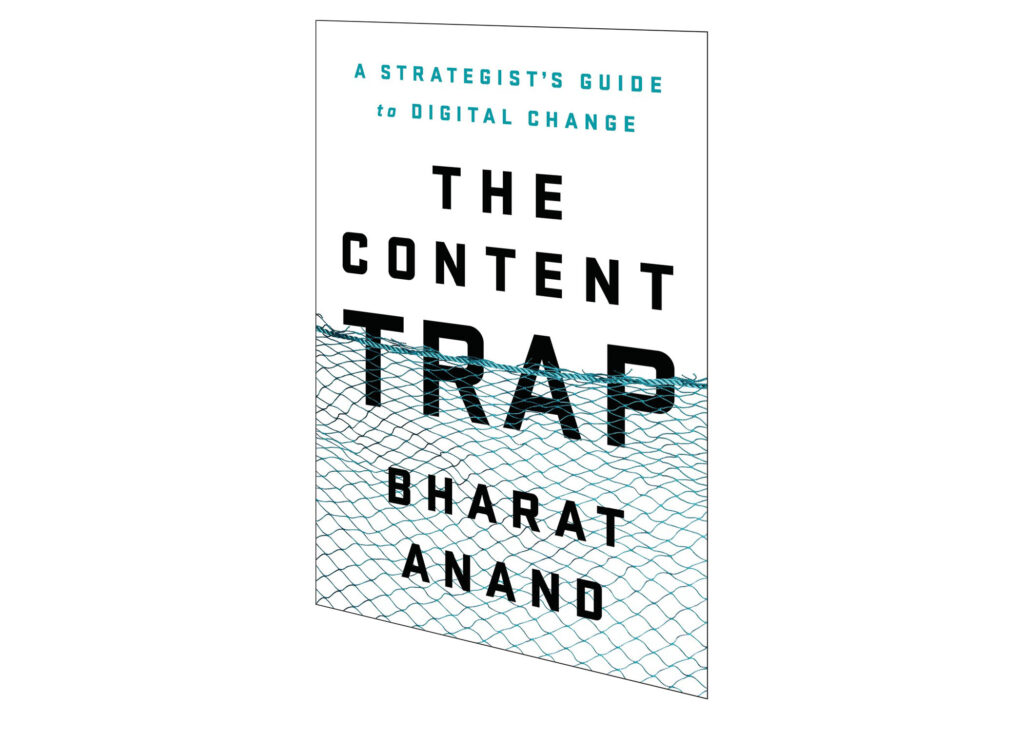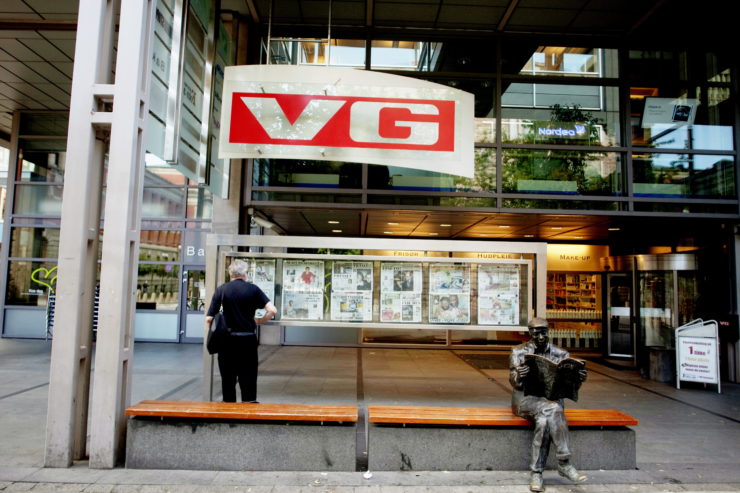Scandinavian media giant Schibsted publishes Verdens Gang or VG, the number one online newspaper in Norway and the nation’s number two print daily. Schibsted’s approach to news is noteworthy because it “boasts some the most profitable sites of any traditional media organization in the world,” writes Harvard Business School professor Bharat Anand in his new book “The Content Trap: A Strategist’s Guide to Digital Change,” published by Random House this fall. One key to Schibsted’s success is recognizing that today connections matter more than content. This excerpt examines the evolution of VG online:
Torry Pedersen and Espen Egil Hansen are not managers you would expect to find in charge of one of the most impressive business transformations of any newspaper in the western world—Pedersen started his career as an editor, Hansen as a photographer. But in 2000 they came together to lead the online division of VG.

During the next year and a half, two events occurred that were entirely outside the managers’ control but would change their entire approach and philosophy. The first was the explosion and sinking of the Russian submarine Kursk. Hansen said, “For three or four days it was out in the Bering Sea as they tried to save the crew. It was an ongoing story, a huge drama that went on and on—we had to keep updating. It was really a wake-up call for me.” Then came 9/11.
We were one of the few news sites in the world that managed to stay afloat. We never went down. It was incredibly important for us, because we delivered news throughout, minute by minute. The main reason was our technical team. It had the nerve, the attention, within minutes, to take everything else off our news site, except four lines of news in the beginning. So our servers didn’t crash. We’d update these four lines of news about the disaster as we received it in real time. This decision about four lines that we made then turned out to be important—we built from there.
Out of these experiences Pedersen and Hansen developed an entirely new approach to journalism—a “three-layer” approach. Said Hansen:
The first layer is live or near-live: We are telling you things as they are happening. Journalism there is a process. Underneath this first layer we have a sketch of a story—this is what has happened, this is what we know now, with more editing of the story. And finally there is the traditional news story—written in full, edited, and then published.
Already these changes were creating a news culture dramatically different from the parent organization’s 150-year-old one. But there was more to come. Go to VG’s front page today and you’ll see certain unusual features: a predominance of pictures rather than text; an absence of “sections”; on the front page, a seamless blending of stories around politics, entertainment, sports, or culture; and, a long—indeed, a very very long—page. In all these respects, VG’s approach differs to this day from most major news sites around the world.
Further Reading: Seeking the Ultimate Complement
The long, “infinite scroll” feeling of the front page was decided mostly by happenstance, and ran counter to expert editorial opinion. Hansen again:
The long front page happened mostly by accident. We started to produce more, but we didn’t have a strong team to edit at that point, so the front page just grew. We would add a new story at the top and just move the rest below it. Torry saw this and got mad—he felt we should prioritize more. So we reduced the length of the front page. But almost immediately, traffic fell. We then started to look into this more, experimented with short and long pages, and it turned out that people really loved the long.
This also gave rise to our visual language and philosophy. With each scroll, we offer something for every reader—culture, politics, sports, travel, technology—rather than “sections” as in a traditional paper. And we put the most important news at the top, but if you scroll down the front page, we are basically telling you that you can get the main stories of the past twenty-four hours.
Hansen elaborated: “When we started there were sections, like in the paper. From the beginning, Torry Pedersen said we needed a new approach. In every screen picture, there should be a mix of news, sports, and entertainment. The reason? There’s something for every reader on every page.”
And then there were the pictures, as Hansen described:
As a photographer, I have always been interested in perception psychology. So we started with huge pictures. Torry came in screaming, “What the hell is this?” But because it was big, it was effective. When we took it down, our traffic fell. We agreed from then on that things should be both big and small—not like the archive, where everything is the same size. As journalists, we are telling you what is dramatic or important.
The reason most news sites to this day still have few pictures isn’t that they aren’t effective—they are. The reason is that online sites are still shaped by print prejudices. Create a newspaper in the traditional manner and the pictures that accompany news stories are the last thing put in, not the first.
Go today to most news sites launched by traditional papers and you’ll see a format little changed from ten years ago—a lot of text, few pictures, similar font sizes, relatively short front pages, the print cycle determining the news day, metrics that track monthly unique visitors rather than daily, an edit-then-publish approach, and sections. In all these respects, VG chose a radically different approach. Indeed, as traditional news sites remain attached to their print brethren’s hip, it’s digital-first sites like Twitter and Facebook that most resemble Schibsted. In March 2015 ESPN reorganized its front page in a similar manner. Over the next several months, traffic soared.
VG’s new approach to building and running its news site was in place by 2004. But that December another world event—the tsunami that ravaged Southeast Asia—ushered in a signature feature of VG’s online newsroom. Hansen described what happened:
We created a simple tool for users to send us pictures or stories. We invited them: Create your stories here. Tell us where you are. The response was incredible—we got stories by the hundreds. I think we were the first news organization in the world with a picture on the ground sent by a telephone. This led us to ask a question we now ask over and over during major events: “Can we help readers help each other?”
In the years that followed, this question became a focal point of VG’s newsroom approach during major events. In 2009 volcanic ash from eruptions in Iceland spread from Iceland to Scandinavia, then to the rest of Europe and as far south as Morocco, fueled by the jet stream. More than ninety-five thousand flights were eventually canceled across Europe and as far away as China. Every flight in Norway was canceled, including medical search and rescue heli- copters—an unprecedented event. VG’s response was not just to publish more content—it was to create an app. By ten o’clock the first night, it had created “Hitchhiker’s Central.” Hansen explained:
It wasn’t news. It was a tool. It was like a marketplace. “I have a car, I am going to Trondheim, if you want a ride, let me know and we can share the petrol.” Or, “I am stuck here, need to get there.” We would hide their phone number but still make the connection between readers. That’s all we were doing, connecting people.
The result was remarkable:
It took off. We were connecting people by the thousands, not only in Norway but in the whole of Europe and beyond. There were bus trips organized through this from all the capitals in Europe—Spain, Bulgaria, France, everywhere. We were sending people to weddings, to funerals. We were getting children home. We sent a cat to a cat exhibition in Finland. It was just amazing. And then people started sending pictures to the newsroom to say thank you. “We are on our way to Bulgaria, thank you, VG.” So two things happened. We got pictures for an ongoing news story that involved basically everyone. And because people sent the pictures with their phones, we had their numbers and could interview them. It strengthened our reputation.
Creating an app for users to upload car pool information is not a natural starting point for a news story about a volcano—unless you ask the question the VG newsroom now asks during any major event: “Can we help readers to help each other?” Hansen described its significance:
That’s the question we ask, not just whether there’s a story we can tell them. If there’s a crisis or breaking news event, we ask that question always. We will say, are you there? Do you have pictures? Click here. So if something is breaking, you will see immediately it’s up there. It’s just part of how we work now.
The 2009 swine flu epidemic put more wind in the sails of the new approach. The Norwegian government had recommended that every person get a flu shot and had delivered supplies. But it was up to each local community to decide where to administer the shots and who got priority. “This wasn’t a centralized approach, and there was a huge demand for information,” recalled Hansen. VG created a wiki-based map of all the communities in Norway, allowing users to post information on where and when people could get the shot. Again, the results were remarkable: “Within minutes it started to work, and within hours the information was complete. Again, an eye-opener.”
“Can we help readers help each other?” may seem an odd question for a news organization to ask. News, you might think, is something that’s broadcast; it isn’t “social.” But the question shifted VG’s mindset about what it did—from “being important” to “being relevant,” as one editor put it. It changed the way VG covered news, and it changed what VG covered. And with dramatic results, as Hansen described: “For each large news event, we gained traffic and reached a new peak. These stories are absolutely critical for us.”
Excerpted from “The Content Trap: The Strategist’s Guide to Digital Change” by Bharat Anand, published by Random House. Copyright © 2016 Bharat Anand. Used with permission. All rights reserved.




